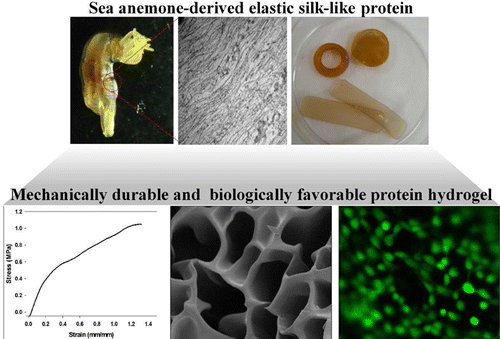Long-Lasting Hydrogel Derived from Sea Anemones

A team of researchers from Pohang and Yeungnam Universities have created a mechanically durable hydrogel inspired in a sturdy protein found in anemones that allows their contraction and relaxation movements. The silk-like protein, derived from anemone’s tentacles, allowed to produce the aneroin hydrogel, which proved to be a good support and environment for cells. The findings were published in the journal Biomacromolecules.
Recent advances in 3D printing and the ability to obtain any kind of cell from pluripotent stem cells seem to have a promising future in the generation of organoids and other organic 3D structures for pharmaceutical testing and even transplantation. Hydrogels are crucial for the development of these techniques. These soft, polymeric structures with high water-absorbing capacity can be used as space-fillers and nutritional support for cells. However, current protein hydrogels are not effective as scaffolds, due to their temporary nature and poor mechanical properties. Besides, their weakness makes them unsuitable to receive physiological stimuli. Sea anemones can change their length and width tenfold with expanding and contracting movements triggered by external stimuli. Dr. Hyung Joon Cha and his team hypothesized that some mechanically strong protein allowed the anemone size changes.
Aneroin is sturdy due to dityrosine linkages
The researchers identified aneroin, the protein that confers sea anemones the mechanical strength and flexibility to dramatically alter their shape and size. Aneroin is characterized by a high proportion of tyrosine residues, and it has been found that dityrosine linkages are a common natural strategy for hardening animal structures. The researchers recombinantly produced the protein in the bacteria Escherichia coli. Using a photo-initiated dityrosine-crosslinking method, the researchers obtained a 3D hydrogel scaffold in a matter of seconds. Mechanical tests proved that the aneroin hydrogel is more resistant than collagen, elastin or gelatin. It is also a proper environment for cell development: cell size, morphology and proliferation were optimal, and cell death was almost null.
The aneroin hydrogel has proved to be better than current hydrogels, and it could be used as a 3D scaffold for cells and organoids, in bio-artificial grafts and as burn applications.
Source: postech

